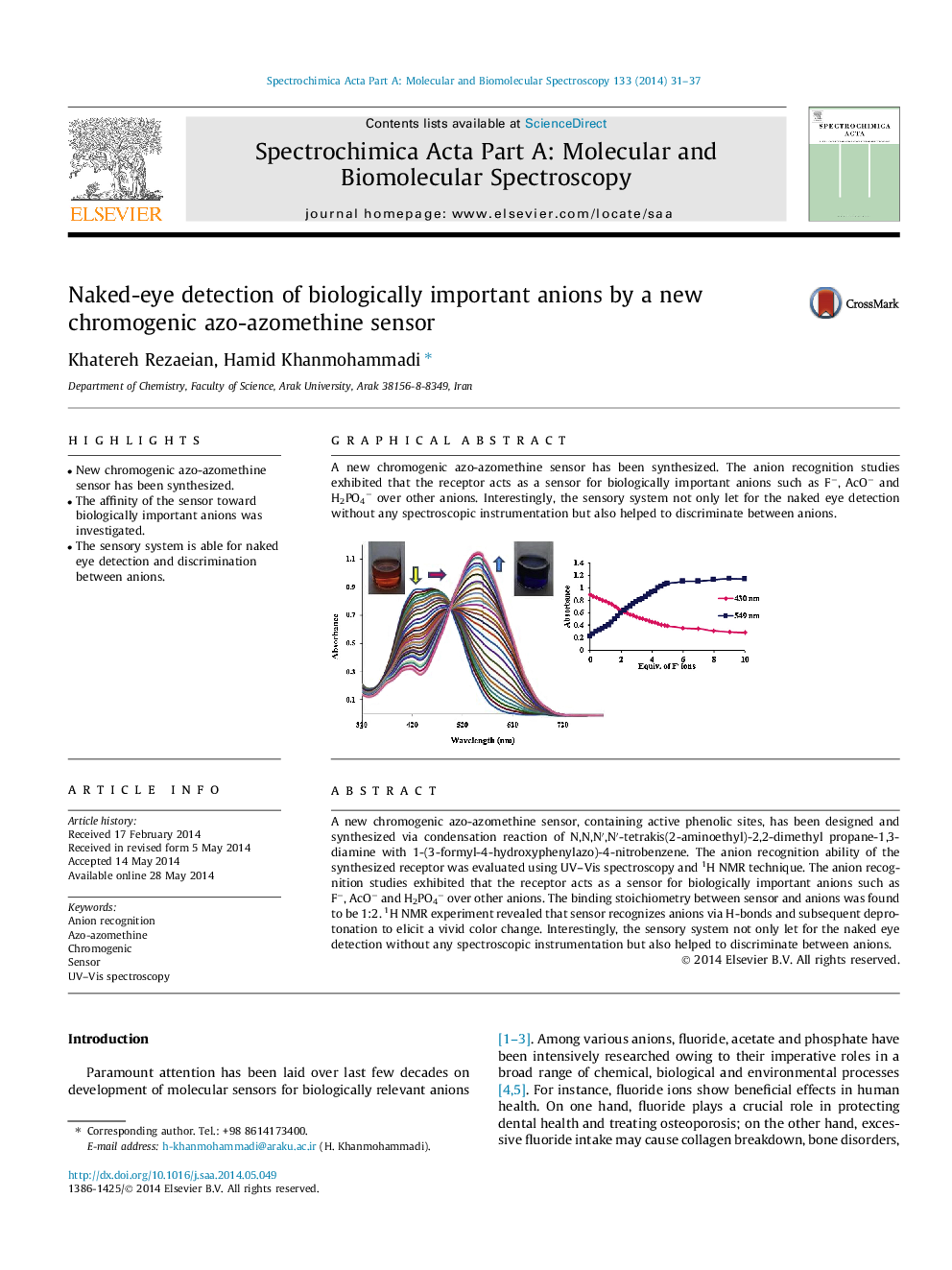| Article ID | Journal | Published Year | Pages | File Type |
|---|---|---|---|---|
| 1233419 | Spectrochimica Acta Part A: Molecular and Biomolecular Spectroscopy | 2014 | 7 Pages |
•New chromogenic azo-azomethine sensor has been synthesized.•The affinity of the sensor toward biologically important anions was investigated.•The sensory system is able for naked eye detection and discrimination between anions.
A new chromogenic azo-azomethine sensor, containing active phenolic sites, has been designed and synthesized via condensation reaction of N,N,N′,N′-tetrakis(2-aminoethyl)-2,2-dimethyl propane-1,3-diamine with 1-(3-formyl-4-hydroxyphenylazo)-4-nitrobenzene. The anion recognition ability of the synthesized receptor was evaluated using UV–Vis spectroscopy and 1H NMR technique. The anion recognition studies exhibited that the receptor acts as a sensor for biologically important anions such as F−, AcO− and H2PO4− over other anions. The binding stoichiometry between sensor and anions was found to be 1:2. 1H NMR experiment revealed that sensor recognizes anions via H-bonds and subsequent deprotonation to elicit a vivid color change. Interestingly, the sensory system not only let for the naked eye detection without any spectroscopic instrumentation but also helped to discriminate between anions.
Graphical abstractA new chromogenic azo-azomethine sensor has been synthesized. The anion recognition studies exhibited that the receptor acts as a sensor for biologically important anions such as F−, AcO− and H2PO4− over other anions. Interestingly, the sensory system not only let for the naked eye detection without any spectroscopic instrumentation but also helped to discriminate between anions.Figure optionsDownload full-size imageDownload as PowerPoint slide
